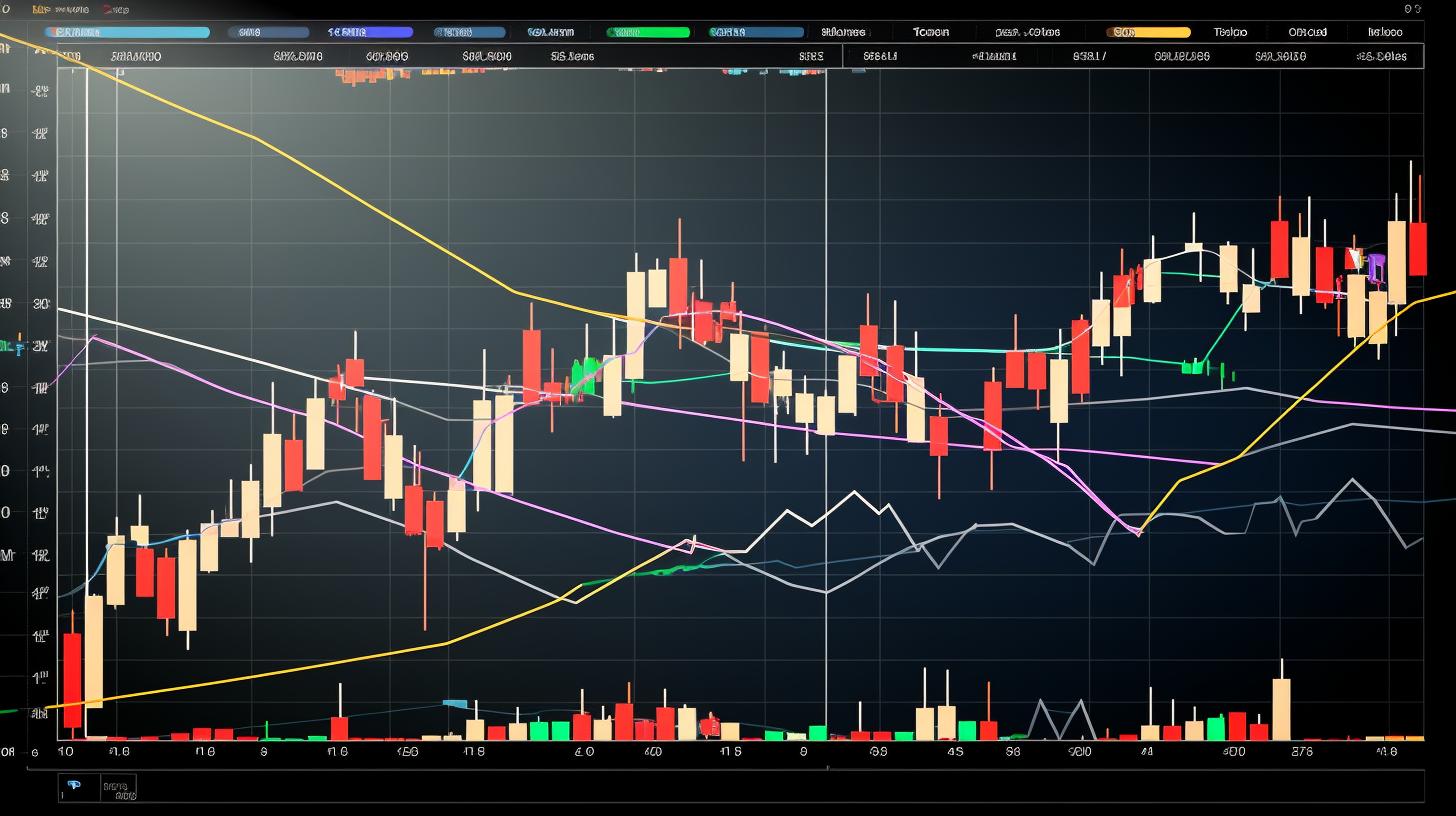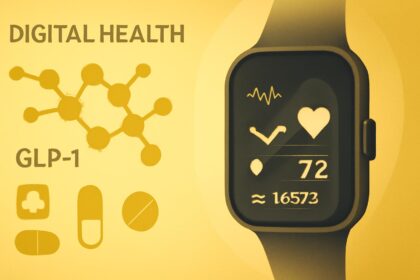The tax changes introduced by the Trump administration create both opportunities and challenges for charitable donors. While non-itemizers stand to benefit from enhanced deductions starting in 2026, high-income taxpayers face reduced incentives that may prompt accelerated giving in the short term. !-- wp:paragraph -->
Contents
FinOracleAI — Market ViewFinOracleAI — Market ViewLeveraging Donor-Advised Funds for Tax EfficiencyFinOracleAI — Market ViewLeveraging Donor-Advised Funds for Tax EfficiencyFinOracleAI — Market ViewLeveraging Donor-Advised Funds for Tax EfficiencyFinOracleAI — Market ViewDouble Impact on High Earners: New Deduction Floor and CapLeveraging Donor-Advised Funds for Tax EfficiencyFinOracleAI — Market ViewDouble Impact on High Earners: New Deduction Floor and CapLeveraging Donor-Advised Funds for Tax EfficiencyFinOracleAI — Market ViewNew Charitable Deduction for Non-Itemizers: A ‘No-Brainer’ for Smaller GiftsDouble Impact on High Earners: New Deduction Floor and CapLeveraging Donor-Advised Funds for Tax EfficiencyFinOracleAI — Market ViewNew Charitable Deduction for Non-Itemizers: A ‘No-Brainer’ for Smaller GiftsDouble Impact on High Earners: New Deduction Floor and CapLeveraging Donor-Advised Funds for Tax EfficiencyFinOracleAI — Market ViewTrump’s Tax Changes and Their Impact on Charitable GivingNew Charitable Deduction for Non-Itemizers: A ‘No-Brainer’ for Smaller GiftsDouble Impact on High Earners: New Deduction Floor and CapLeveraging Donor-Advised Funds for Tax EfficiencyFinOracleAI — Market View
- Opportunities: Increased deductions for non-itemizers encourage greater participation in charitable giving.
- Risks: New deduction floors and caps may discourage large donations from top earners if not timed correctly.
- Strategies: Utilizing donor-advised funds can optimize timing and tax benefits amid evolving regulations.
- Market Impact: Potential shifts in donation timing might affect nonprofit cash flows and financial planning.
FinOracleAI — Market View
The tax changes introduced by the Trump administration create both opportunities and challenges for charitable donors. While non-itemizers stand to benefit from enhanced deductions starting in 2026, high-income taxpayers face reduced incentives that may prompt accelerated giving in the short term. !-- wp:paragraph -->- Opportunities: Increased deductions for non-itemizers encourage greater participation in charitable giving.
- Risks: New deduction floors and caps may discourage large donations from top earners if not timed correctly.
- Strategies: Utilizing donor-advised funds can optimize timing and tax benefits amid evolving regulations.
- Market Impact: Potential shifts in donation timing might affect nonprofit cash flows and financial planning.
FinOracleAI — Market View
The tax changes introduced by the Trump administration create both opportunities and challenges for charitable donors. While non-itemizers stand to benefit from enhanced deductions starting in 2026, high-income taxpayers face reduced incentives that may prompt accelerated giving in the short term. !-- wp:paragraph -->- Opportunities: Increased deductions for non-itemizers encourage greater participation in charitable giving.
- Risks: New deduction floors and caps may discourage large donations from top earners if not timed correctly.
- Strategies: Utilizing donor-advised funds can optimize timing and tax benefits amid evolving regulations.
- Market Impact: Potential shifts in donation timing might affect nonprofit cash flows and financial planning.
“There’s some benefit to accelerating [donations] this year,” noted Sheneya Wilson, CPA and CEO of Fola Financial.Leveraging Donor-Advised Funds for Tax Efficiency
Donor-advised funds (DAFs) remain a strategic tool for donors aiming to optimize tax outcomes. By “bunching” multiple years’ worth of charitable contributions into a single tax year, donors receive an immediate deduction. Subsequently, they can distribute grants to charities over time, potentially growing the fund’s assets. !-- wp:paragraph --> This approach is particularly relevant in light of the new 2026 tax rules, allowing donors to frontload deductions before the introduction of the deduction floor and cap. !-- wp:paragraph -->FinOracleAI — Market View
The tax changes introduced by the Trump administration create both opportunities and challenges for charitable donors. While non-itemizers stand to benefit from enhanced deductions starting in 2026, high-income taxpayers face reduced incentives that may prompt accelerated giving in the short term. !-- wp:paragraph -->- Opportunities: Increased deductions for non-itemizers encourage greater participation in charitable giving.
- Risks: New deduction floors and caps may discourage large donations from top earners if not timed correctly.
- Strategies: Utilizing donor-advised funds can optimize timing and tax benefits amid evolving regulations.
- Market Impact: Potential shifts in donation timing might affect nonprofit cash flows and financial planning.
“There’s some benefit to accelerating [donations] this year,” noted Sheneya Wilson, CPA and CEO of Fola Financial.Leveraging Donor-Advised Funds for Tax Efficiency
Donor-advised funds (DAFs) remain a strategic tool for donors aiming to optimize tax outcomes. By “bunching” multiple years’ worth of charitable contributions into a single tax year, donors receive an immediate deduction. Subsequently, they can distribute grants to charities over time, potentially growing the fund’s assets. !-- wp:paragraph --> This approach is particularly relevant in light of the new 2026 tax rules, allowing donors to frontload deductions before the introduction of the deduction floor and cap. !-- wp:paragraph -->FinOracleAI — Market View
The tax changes introduced by the Trump administration create both opportunities and challenges for charitable donors. While non-itemizers stand to benefit from enhanced deductions starting in 2026, high-income taxpayers face reduced incentives that may prompt accelerated giving in the short term. !-- wp:paragraph -->- Opportunities: Increased deductions for non-itemizers encourage greater participation in charitable giving.
- Risks: New deduction floors and caps may discourage large donations from top earners if not timed correctly.
- Strategies: Utilizing donor-advised funds can optimize timing and tax benefits amid evolving regulations.
- Market Impact: Potential shifts in donation timing might affect nonprofit cash flows and financial planning.
“There’s some benefit to accelerating [donations] this year,” noted Sheneya Wilson, CPA and CEO of Fola Financial.Leveraging Donor-Advised Funds for Tax Efficiency
Donor-advised funds (DAFs) remain a strategic tool for donors aiming to optimize tax outcomes. By “bunching” multiple years’ worth of charitable contributions into a single tax year, donors receive an immediate deduction. Subsequently, they can distribute grants to charities over time, potentially growing the fund’s assets. !-- wp:paragraph --> This approach is particularly relevant in light of the new 2026 tax rules, allowing donors to frontload deductions before the introduction of the deduction floor and cap. !-- wp:paragraph -->FinOracleAI — Market View
The tax changes introduced by the Trump administration create both opportunities and challenges for charitable donors. While non-itemizers stand to benefit from enhanced deductions starting in 2026, high-income taxpayers face reduced incentives that may prompt accelerated giving in the short term. !-- wp:paragraph -->- Opportunities: Increased deductions for non-itemizers encourage greater participation in charitable giving.
- Risks: New deduction floors and caps may discourage large donations from top earners if not timed correctly.
- Strategies: Utilizing donor-advised funds can optimize timing and tax benefits amid evolving regulations.
- Market Impact: Potential shifts in donation timing might affect nonprofit cash flows and financial planning.
“It seems like a no-brainer to just do it in January and capture a little benefit that you wouldn’t otherwise achieve,” said Edward Jastrem, CFP and Chief Planning Officer at Heritage Financial Services.Double Impact on High Earners: New Deduction Floor and Cap
For high-income taxpayers, the legislation imposes two new constraints starting in 2026. First, an itemized charitable deduction “floor” requires contributions to exceed 0.5% of adjusted gross income (AGI) before deductions apply. Second, the tax benefit for those in the top 37% bracket is capped, effectively reducing the deduction rate to 35%. !-- wp:paragraph --> Dianne Mehany, leader of EY Private’s national tax group, described this as a “double hit” that diminishes the value of charitable deductions for affluent donors. !-- wp:paragraph --> Given these limitations, accelerating donations before 2026 may be advantageous for high earners seeking to maximize tax benefits. !-- wp:paragraph -->“There’s some benefit to accelerating [donations] this year,” noted Sheneya Wilson, CPA and CEO of Fola Financial.Leveraging Donor-Advised Funds for Tax Efficiency
Donor-advised funds (DAFs) remain a strategic tool for donors aiming to optimize tax outcomes. By “bunching” multiple years’ worth of charitable contributions into a single tax year, donors receive an immediate deduction. Subsequently, they can distribute grants to charities over time, potentially growing the fund’s assets. !-- wp:paragraph --> This approach is particularly relevant in light of the new 2026 tax rules, allowing donors to frontload deductions before the introduction of the deduction floor and cap. !-- wp:paragraph -->FinOracleAI — Market View
The tax changes introduced by the Trump administration create both opportunities and challenges for charitable donors. While non-itemizers stand to benefit from enhanced deductions starting in 2026, high-income taxpayers face reduced incentives that may prompt accelerated giving in the short term. !-- wp:paragraph -->- Opportunities: Increased deductions for non-itemizers encourage greater participation in charitable giving.
- Risks: New deduction floors and caps may discourage large donations from top earners if not timed correctly.
- Strategies: Utilizing donor-advised funds can optimize timing and tax benefits amid evolving regulations.
- Market Impact: Potential shifts in donation timing might affect nonprofit cash flows and financial planning.
“It seems like a no-brainer to just do it in January and capture a little benefit that you wouldn’t otherwise achieve,” said Edward Jastrem, CFP and Chief Planning Officer at Heritage Financial Services.Double Impact on High Earners: New Deduction Floor and Cap
For high-income taxpayers, the legislation imposes two new constraints starting in 2026. First, an itemized charitable deduction “floor” requires contributions to exceed 0.5% of adjusted gross income (AGI) before deductions apply. Second, the tax benefit for those in the top 37% bracket is capped, effectively reducing the deduction rate to 35%. !-- wp:paragraph --> Dianne Mehany, leader of EY Private’s national tax group, described this as a “double hit” that diminishes the value of charitable deductions for affluent donors. !-- wp:paragraph --> Given these limitations, accelerating donations before 2026 may be advantageous for high earners seeking to maximize tax benefits. !-- wp:paragraph -->“There’s some benefit to accelerating [donations] this year,” noted Sheneya Wilson, CPA and CEO of Fola Financial.Leveraging Donor-Advised Funds for Tax Efficiency
Donor-advised funds (DAFs) remain a strategic tool for donors aiming to optimize tax outcomes. By “bunching” multiple years’ worth of charitable contributions into a single tax year, donors receive an immediate deduction. Subsequently, they can distribute grants to charities over time, potentially growing the fund’s assets. !-- wp:paragraph --> This approach is particularly relevant in light of the new 2026 tax rules, allowing donors to frontload deductions before the introduction of the deduction floor and cap. !-- wp:paragraph -->FinOracleAI — Market View
The tax changes introduced by the Trump administration create both opportunities and challenges for charitable donors. While non-itemizers stand to benefit from enhanced deductions starting in 2026, high-income taxpayers face reduced incentives that may prompt accelerated giving in the short term. !-- wp:paragraph -->- Opportunities: Increased deductions for non-itemizers encourage greater participation in charitable giving.
- Risks: New deduction floors and caps may discourage large donations from top earners if not timed correctly.
- Strategies: Utilizing donor-advised funds can optimize timing and tax benefits amid evolving regulations.
- Market Impact: Potential shifts in donation timing might affect nonprofit cash flows and financial planning.
New Charitable Deduction for Non-Itemizers: A ‘No-Brainer’ for Smaller Gifts
Under current tax rules, taxpayers claim either itemized deductions or the standard deduction, whichever is greater. For the tax year 2025, the standard deduction is $15,750 for single filers and $31,500 for married couples filing jointly. Notably, approximately 90% of taxpayers do not itemize, thus foregoing the ability to deduct charitable contributions. !-- wp:paragraph --> Starting in 2026, the new legislation introduces a charitable tax break for non-itemizers, allowing deductions up to $1,000 for individuals and $2,000 for married couples filing jointly. This adjustment could incentivize delaying smaller donations until 2026 to capitalize on this benefit. !-- wp:paragraph -->“It seems like a no-brainer to just do it in January and capture a little benefit that you wouldn’t otherwise achieve,” said Edward Jastrem, CFP and Chief Planning Officer at Heritage Financial Services.Double Impact on High Earners: New Deduction Floor and Cap
For high-income taxpayers, the legislation imposes two new constraints starting in 2026. First, an itemized charitable deduction “floor” requires contributions to exceed 0.5% of adjusted gross income (AGI) before deductions apply. Second, the tax benefit for those in the top 37% bracket is capped, effectively reducing the deduction rate to 35%. !-- wp:paragraph --> Dianne Mehany, leader of EY Private’s national tax group, described this as a “double hit” that diminishes the value of charitable deductions for affluent donors. !-- wp:paragraph --> Given these limitations, accelerating donations before 2026 may be advantageous for high earners seeking to maximize tax benefits. !-- wp:paragraph -->“There’s some benefit to accelerating [donations] this year,” noted Sheneya Wilson, CPA and CEO of Fola Financial.Leveraging Donor-Advised Funds for Tax Efficiency
Donor-advised funds (DAFs) remain a strategic tool for donors aiming to optimize tax outcomes. By “bunching” multiple years’ worth of charitable contributions into a single tax year, donors receive an immediate deduction. Subsequently, they can distribute grants to charities over time, potentially growing the fund’s assets. !-- wp:paragraph --> This approach is particularly relevant in light of the new 2026 tax rules, allowing donors to frontload deductions before the introduction of the deduction floor and cap. !-- wp:paragraph -->FinOracleAI — Market View
The tax changes introduced by the Trump administration create both opportunities and challenges for charitable donors. While non-itemizers stand to benefit from enhanced deductions starting in 2026, high-income taxpayers face reduced incentives that may prompt accelerated giving in the short term. !-- wp:paragraph -->- Opportunities: Increased deductions for non-itemizers encourage greater participation in charitable giving.
- Risks: New deduction floors and caps may discourage large donations from top earners if not timed correctly.
- Strategies: Utilizing donor-advised funds can optimize timing and tax benefits amid evolving regulations.
- Market Impact: Potential shifts in donation timing might affect nonprofit cash flows and financial planning.
New Charitable Deduction for Non-Itemizers: A ‘No-Brainer’ for Smaller Gifts
Under current tax rules, taxpayers claim either itemized deductions or the standard deduction, whichever is greater. For the tax year 2025, the standard deduction is $15,750 for single filers and $31,500 for married couples filing jointly. Notably, approximately 90% of taxpayers do not itemize, thus foregoing the ability to deduct charitable contributions. !-- wp:paragraph --> Starting in 2026, the new legislation introduces a charitable tax break for non-itemizers, allowing deductions up to $1,000 for individuals and $2,000 for married couples filing jointly. This adjustment could incentivize delaying smaller donations until 2026 to capitalize on this benefit. !-- wp:paragraph -->“It seems like a no-brainer to just do it in January and capture a little benefit that you wouldn’t otherwise achieve,” said Edward Jastrem, CFP and Chief Planning Officer at Heritage Financial Services.Double Impact on High Earners: New Deduction Floor and Cap
For high-income taxpayers, the legislation imposes two new constraints starting in 2026. First, an itemized charitable deduction “floor” requires contributions to exceed 0.5% of adjusted gross income (AGI) before deductions apply. Second, the tax benefit for those in the top 37% bracket is capped, effectively reducing the deduction rate to 35%. !-- wp:paragraph --> Dianne Mehany, leader of EY Private’s national tax group, described this as a “double hit” that diminishes the value of charitable deductions for affluent donors. !-- wp:paragraph --> Given these limitations, accelerating donations before 2026 may be advantageous for high earners seeking to maximize tax benefits. !-- wp:paragraph -->“There’s some benefit to accelerating [donations] this year,” noted Sheneya Wilson, CPA and CEO of Fola Financial.Leveraging Donor-Advised Funds for Tax Efficiency
Donor-advised funds (DAFs) remain a strategic tool for donors aiming to optimize tax outcomes. By “bunching” multiple years’ worth of charitable contributions into a single tax year, donors receive an immediate deduction. Subsequently, they can distribute grants to charities over time, potentially growing the fund’s assets. !-- wp:paragraph --> This approach is particularly relevant in light of the new 2026 tax rules, allowing donors to frontload deductions before the introduction of the deduction floor and cap. !-- wp:paragraph -->FinOracleAI — Market View
The tax changes introduced by the Trump administration create both opportunities and challenges for charitable donors. While non-itemizers stand to benefit from enhanced deductions starting in 2026, high-income taxpayers face reduced incentives that may prompt accelerated giving in the short term. !-- wp:paragraph -->- Opportunities: Increased deductions for non-itemizers encourage greater participation in charitable giving.
- Risks: New deduction floors and caps may discourage large donations from top earners if not timed correctly.
- Strategies: Utilizing donor-advised funds can optimize timing and tax benefits amid evolving regulations.
- Market Impact: Potential shifts in donation timing might affect nonprofit cash flows and financial planning.
Trump’s Tax Changes and Their Impact on Charitable Giving
President Donald Trump’s recent tax legislation has introduced substantial changes to the framework governing charitable deductions. These changes, effective primarily in 2026, carry notable implications for individual donors, influencing both the timing and scale of year-end charitable contributions. !-- wp:paragraph --> According to Giving USA’s 2024 annual report, individual charitable giving in the U.S. reached $392.45 billion, marking a 5% increase adjusted for inflation. However, as 2025 draws to a close, experts advise reassessing traditional giving strategies in light of evolving tax rules. !-- wp:paragraph -->New Charitable Deduction for Non-Itemizers: A ‘No-Brainer’ for Smaller Gifts
Under current tax rules, taxpayers claim either itemized deductions or the standard deduction, whichever is greater. For the tax year 2025, the standard deduction is $15,750 for single filers and $31,500 for married couples filing jointly. Notably, approximately 90% of taxpayers do not itemize, thus foregoing the ability to deduct charitable contributions. !-- wp:paragraph --> Starting in 2026, the new legislation introduces a charitable tax break for non-itemizers, allowing deductions up to $1,000 for individuals and $2,000 for married couples filing jointly. This adjustment could incentivize delaying smaller donations until 2026 to capitalize on this benefit. !-- wp:paragraph -->“It seems like a no-brainer to just do it in January and capture a little benefit that you wouldn’t otherwise achieve,” said Edward Jastrem, CFP and Chief Planning Officer at Heritage Financial Services.Double Impact on High Earners: New Deduction Floor and Cap
For high-income taxpayers, the legislation imposes two new constraints starting in 2026. First, an itemized charitable deduction “floor” requires contributions to exceed 0.5% of adjusted gross income (AGI) before deductions apply. Second, the tax benefit for those in the top 37% bracket is capped, effectively reducing the deduction rate to 35%. !-- wp:paragraph --> Dianne Mehany, leader of EY Private’s national tax group, described this as a “double hit” that diminishes the value of charitable deductions for affluent donors. !-- wp:paragraph --> Given these limitations, accelerating donations before 2026 may be advantageous for high earners seeking to maximize tax benefits. !-- wp:paragraph -->“There’s some benefit to accelerating [donations] this year,” noted Sheneya Wilson, CPA and CEO of Fola Financial.Leveraging Donor-Advised Funds for Tax Efficiency
Donor-advised funds (DAFs) remain a strategic tool for donors aiming to optimize tax outcomes. By “bunching” multiple years’ worth of charitable contributions into a single tax year, donors receive an immediate deduction. Subsequently, they can distribute grants to charities over time, potentially growing the fund’s assets. !-- wp:paragraph --> This approach is particularly relevant in light of the new 2026 tax rules, allowing donors to frontload deductions before the introduction of the deduction floor and cap. !-- wp:paragraph -->FinOracleAI — Market View
The tax changes introduced by the Trump administration create both opportunities and challenges for charitable donors. While non-itemizers stand to benefit from enhanced deductions starting in 2026, high-income taxpayers face reduced incentives that may prompt accelerated giving in the short term. !-- wp:paragraph -->- Opportunities: Increased deductions for non-itemizers encourage greater participation in charitable giving.
- Risks: New deduction floors and caps may discourage large donations from top earners if not timed correctly.
- Strategies: Utilizing donor-advised funds can optimize timing and tax benefits amid evolving regulations.
- Market Impact: Potential shifts in donation timing might affect nonprofit cash flows and financial planning.













